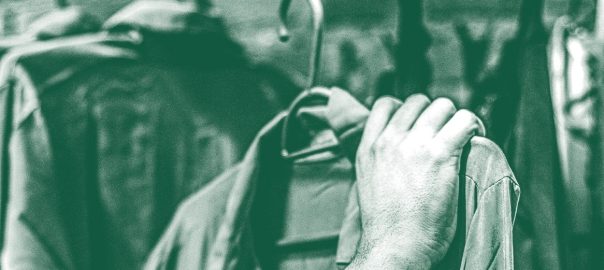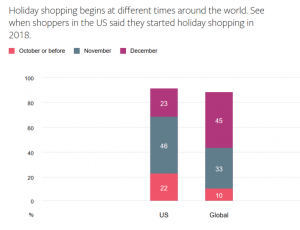By Javeria Khalid
Iqra Anwar, a resident of Lahore, the second largest city of Pakistan is a frequent thrift shopper. Though her favorite brands—American fast-fashion staples like H&M, Zara, and Victoria’s Secret—don’t have outposts in the city, she still manages to buy their preloved versions at dirt cheap prices by thrifting.
“I got tank tops for 200 rupees (66 cents), which I would have otherwise gotten for 2000 rupees or for even more than 3000 rupees (around $10),” she says about her latest purchase.
The 22-year-old university student wanted stylish and branded clothes on a budget while she attended her classes. She’s not alone. With Pakistan in the midst of its worst-ever economic crisis and its currency severely devalued alongside record-high inflation (annual inflation was at 38% in May), she says she’s seeing more people are turning to affordable, secondhand clothing.
“Now, a lot of my friends who are from elite backgrounds ask me to go thrifting with them because the economy has affected anyone and everyone,” Anwar says. “They could buy [new] Shein and Zara products two years ago, but now they cannot.” Shoppers like Anwar also recognize the climate impact of getting as much wear out of fast-fashion items. “Because of fast fashion, there are landfills with clothes that people have only worn once,” she says. “It has become more of a social good thing to thrift.”
Whatever their reasons, shoppers in Pakistan have no shortage of pre-worn clothes. In 2021, Pakistan imported $180M of secondhand clothing, becoming the second-largest importer of pre-owned clothing in the world. Secondhand clothing was mainly imported from China, United States, and Canada and became the 69th most imported product in Pakistan. The country has long had a booming secondhand market, with clothing being sold at its “landa bazaars.” As the purchasing power of everyday Pakistani shoppers has been diminished, these bazaars—and a growing roster of online clothing sellers—have become resources for keeping wardrobes across the country full.
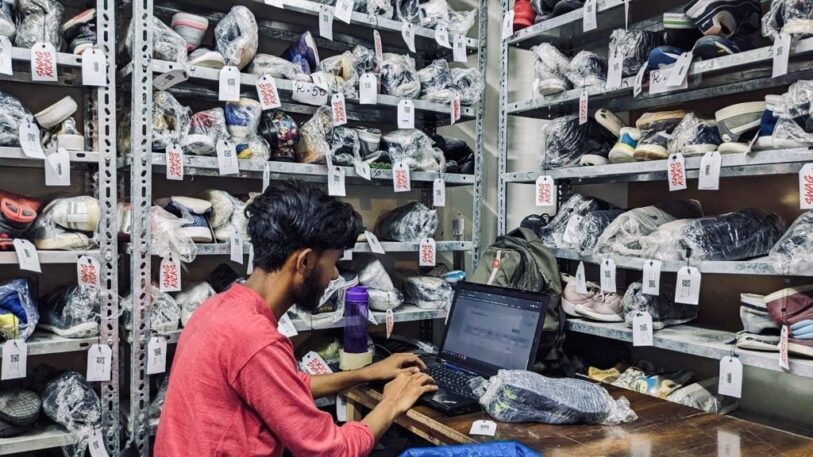
Until relatively recently, online sale of pre-owned clothing in Pakistan has been negligible. One of the earliest marketplaces to debut online was Swag Kicks, founded by self-described sneakerhead Nofal Khan who, as a child, would rely on his relatives visiting from Western countries to get him high-end branded sneakers that were unavailable in Pakistan. That is, until he discovered warehouses housing imported secondhand shoes.
“There were Jordans, Onitsuka Tiger, Nike Air Force 1s . . . the kind of shoes that I would never get in Pakistan,”Khan says. “When I used to wear those shoes to university, a lot of people would ask me where I got them from. That’s when I realized . . . they didn’t have access to quality shoes.” This made him realize the potential of this business and pushed him to start an online marketplace.
Earlier this year, Swag Kicks raised $1.2 million in a seed funding round led by i2i Ventures, joined by Techstars Toronto, SOSV Orbit, and local angel investors. This money, Nofal says, is being invested into automating the inventory process, scaling existing technology and improving disinfection and sanitization of clothes.
Digitalizing this market makes sense for Pakistan: the country has a huge young population with around 64% of the population under 30 years old. Internet penetration stood at 36.7% at the start of 2023, giving easy access to online stores.
“Young people are looking at global trends on Instagram and TikTok. They follow Western celebrities, and they know which shoes are famous, but they don’t have access to those brands,” Khan says. “We are bridging the gap by bringing the best of sneaker culture to Pakistan . . . and listing them on our website for a fraction of the cost of what their brand-new counterparts would cost.”
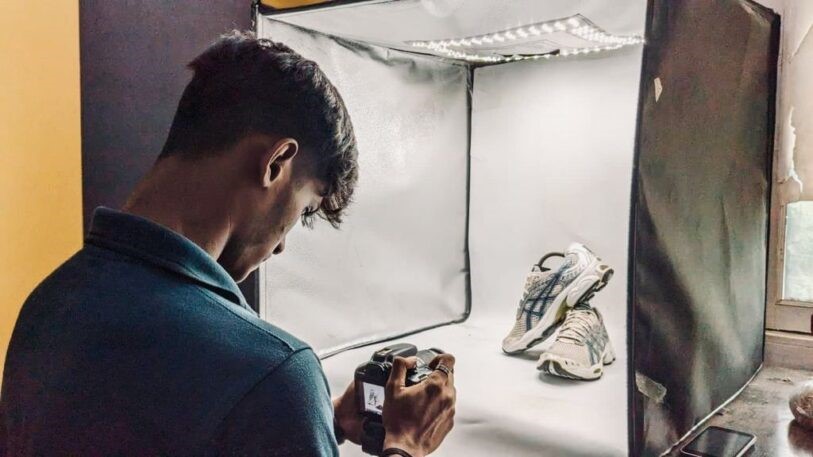
Digitizing has also given the online marketplace an upper hand over the existing physical landa bazaars. These markets are crowded, located in far-flung areas and often considered unsafe for women. And physical stores limit inventory, something Khan says is an advantage to selling online. “At any given point, we have 25,000 different types of shoes,” he says. “Physical stores can hold a limited amount of inventory.”
Through trending reels and captivating visuals, the startup aims to attract a younger audience on social media. Its TikTok, Instagram, and Facebook pages boast a combined reach of 135,000 followers.
Instagram in particular is where a growing number of sellers are courting younger shoppers like Iqra—and its user demographics are on their side. People, aged 18 to 24, are Instagram’s largest user group in Pakistan, which has 13 million users nationwide.
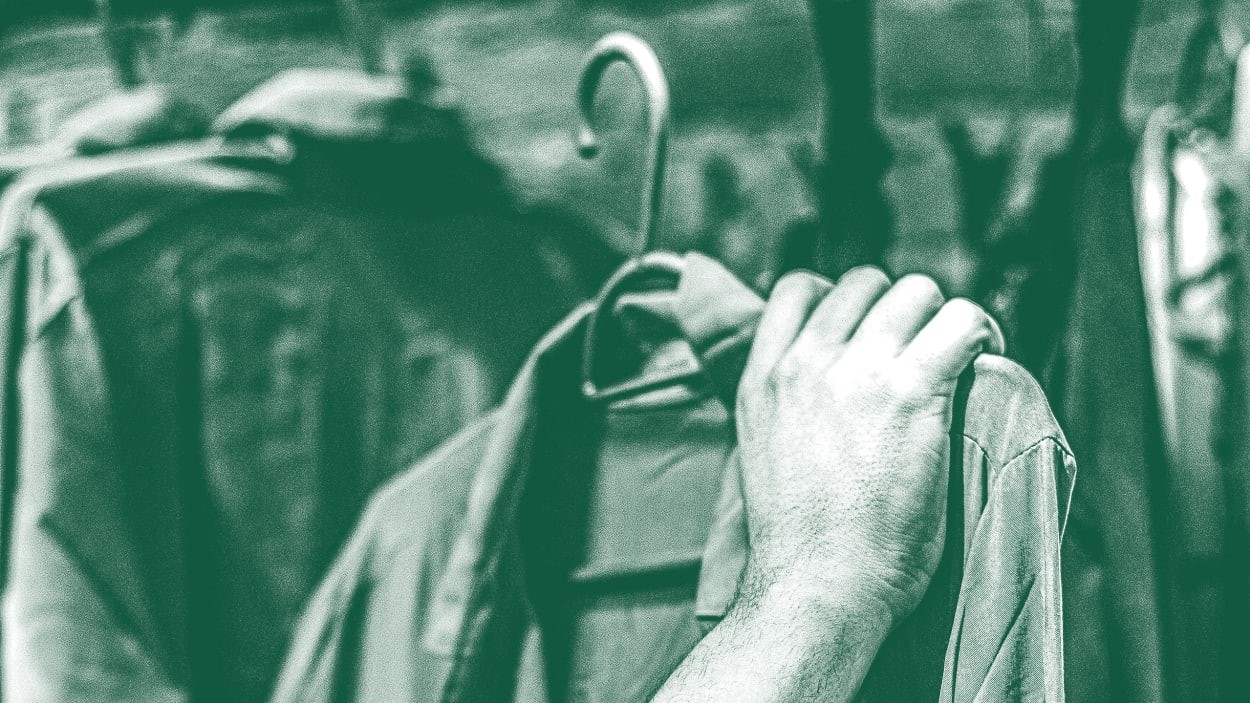
Sellers like Zari Faisal are using this to their advantage, using the platform as a storefront for pre-owned clothing. Faisal’s Instagram account, Thrifty Preloved, started in 2019 as an experiment, and has grown to have more than 40,000 followers who place an average of 300 orders per week—fulfilled by more than 20 employees. Faisal adds five to six new products per day, and offers delivery to nationwide—including smaller cities like Lodhran and Bahawalpur.
More than just e-commerce destinations, Instagram accounts also serve as resources for potential customers—Faisal says she has helped suggest outfits for a follower asking about what they might wear to a business presentation. “Our team got really involved,” Faisal says. “To be that sort of buddy that someone comes to for fashion advice is something that we really enjoy doing.”
Faisal sees continued growth in thrift shopping as Pakistan’s economic turmoil continues—and says she’s playing a role in keeping fashion accessible. “A generic Zara piece would cost around 13000 Pakistani rupees (roughly $43.66) minimum. . . . We’re able to provide Zara pieces, under, like you know, 2500 rupees ($8.25),” she says. “We are getting access to [good quality] products at pricing that none of us would be able to afford in Pakistan right now.”
(6)
